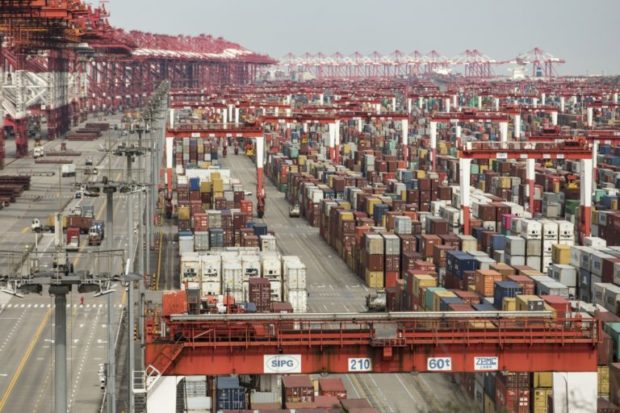Companies risk losing more than 40% of annual profit once a decade in a world threatened by trade wars, cyber attacks, pandemics and climate change, according to McKinsey & Co., which estimates the COVID-19 crisis could top $5 trillion in economic losses worldwide.
The New York-based consultancy, in a report that analyzes 325 companies in 13 industries, quantifies what corporate number crunchers have sensed since the tsunami struck Japan in 2011: that man-made and natural disasters are getting more severe, frequent and costly, and that supply chains spanning the globe need to adapt to reduce exposure to threats to business survival.
“The average company can expect to have a month to two months’ disruption of production every 3.7 years, which is incredibly frequent,” said Susan Lund, a partner at the McKinsey Global Institute. “So although you don’t know what the next shock is going to be, the fact is, in most industries these have become quite significant.”
By establishing the frequency of disruptions, McKinsey modeled the potential financial fallout. The most severe shock lasting 100 days could wipe out an entire year of earnings in some industries, it said.
According to the report, the five sectors that are most exposed to a set of six shocks account for some $4.4 trillion in annual exports, or about a quarter of global trade. Those industries are communications equipment, apparel, petroleum products, transportation equipment and mining. The least exposed are food and beverage, pharmaceuticals, fabricated metal, wood products and medical devices.
Erasing $5 Trillion
McKinsey started its research at the end of last year, when the U.S.-China trade war seemed like a sizable blow to global trade. Then the pandemic delivered the “mother of all supply-chain shocks,” potentially causing $5 trillion in losses “if we end up in the middle scenario that we model,” Lund said.
“Companies that didn’t know that they had any link to Wuhan found out that they did,” she said, referring to the central Chinese city where the virus first emerged last year.
As companies reassess the trade-offs between efficiency and resilience, many are considering more geographically dispersed suppliers, particularly in places other than China.
McKinsey’s report estimated, however, that production amounting to only 16% to 26% of global trade, worth $2.9 trillion to $4.6 trillion, could feasibly move across borders over the next three to five years.
For labor-intensive industries like textiles, apparel and furniture, there’s a good argument to move production from China to places like Bangladesh, Vietnam, India or Ethiopia.
But for high-tech fields like semiconductors, the opposite is true, Lund said. “There is no business case to invest outside the established cutting-edge clusters outside Taiwan and South Korea because it’s a massive, massive capital investment, huge economies of scale and highly specialized,” she said.
Regional Hubs
Lund reckons that the pandemic will accelerate the shift to more regional trade, the way the auto industry has three hubs in Asia, North America and Europe.
Still, moving production closer to home may reduce some risk, but it may not do anything to reduce geopolitical flareups that result in higher tariffs, other barriers to commerce like export controls or even full-blown trade wars.
McKinsey’s report cites World Bank research showing 80% of trade involves countries with declining political stability scores.
“In that context, you need to start thinking about some things that five or 10 years ago maybe you weren’t scenario planning for,” said Ed Barriball, a McKinsey partner and co-author of the report. “What if that tariff comes into place? Is this something where we take an earnings hit or something we could potentially could make ourselves resilient against?”
Photograph: Shipping containers stacked at the Yangshan Deepwater Port in Shanghai on March 23, 2020. Photo credit: Qilai Shen, Bloomberg.





















 Nearly Half of 100 Largest P/C Insurers Destroy Value: ACORD
Nearly Half of 100 Largest P/C Insurers Destroy Value: ACORD  First Atlantic Hurricane Forecast for 2026 Suggests Season Close to 30-Year Norm
First Atlantic Hurricane Forecast for 2026 Suggests Season Close to 30-Year Norm  What to Expect in 2026: U.S. P/C Results More Like 2024
What to Expect in 2026: U.S. P/C Results More Like 2024 



